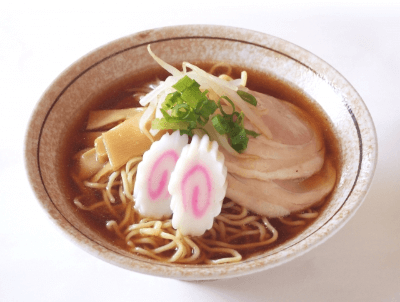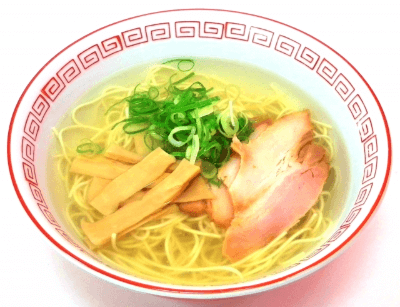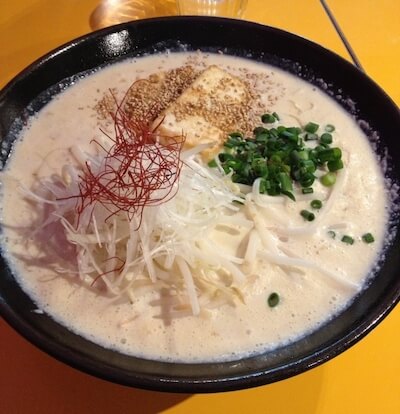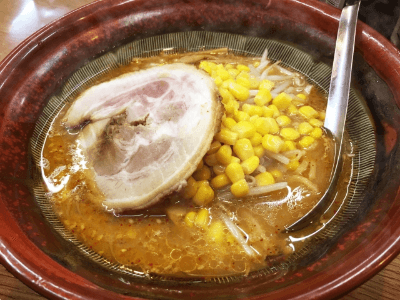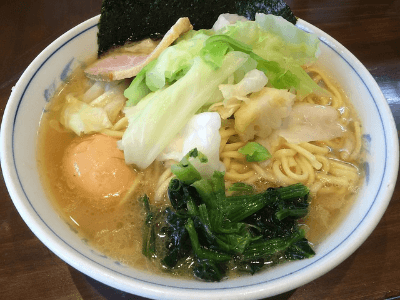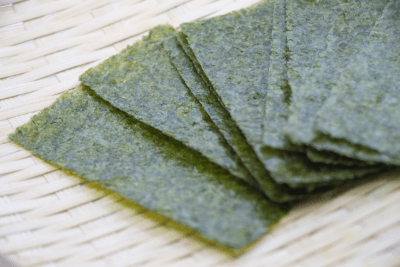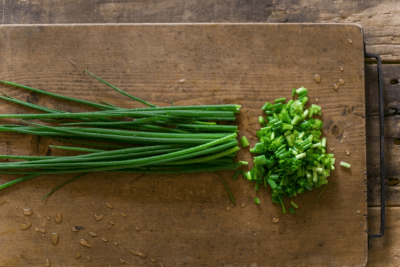

182 Cooking Classes in Osaka
39 Classes in Osaka
13 Classes in Osaka
15 Classes in Osaka
20 Classes in Osaka
6 Classes in Osaka
8 Classes in Osaka
11 Classes in Osaka
11 Classes in Osaka
9 Classes in Osaka
12 Classes in Osaka
7 Classes in Osaka
2 Classes in Osaka
72 Classes in Osaka
9 Classes in Osaka
Whether you eat meat or stick to a vegetarian or vegan or halal or gluten-free diet, there are ramen cooking classes in Osaka for you! Don't pass up on the opportunity to learn how to cook your own tasty ramen during your stay in Japan's foodie mecca.






Keiko-san’s cooking lessons is a must try. Not only is she an expert in the kitchen, she is also a sensei that is patient and kind towards her students. A 5/5 experience that we will definitely try again in the future. Arigatou Keiko-san for an awesome experience!
I love every minute of my cooking experience with Yuta yesterday. She was very kind and welcoming. Yuta speaks excellent English which made it very easy to understand her instructions. Her cooking techniques were exceptional. She has alot of knowledge and expertise in cooking Japanese food. I rea...
The cooking class with Keiko was amazing! She showed us how to make many delicious japanese dishes, which we will definitely want to try make at home. Keiko is an awesome host with great skill :)
Our experience with Keiko was absolutely awesome. From start to finish we had a wonderful time and appreciated the style Keiko used to teach us. Being invited into her home was a special treat. This did not have a touristy vibe to it. It was a legitimate cultural experience, and we are so app...
Thank you the great experience with japanese cooking. We had a lot of fun together and the food was very tasty. We will surely cook ramen when we are back home!
Some of the best ramen cooking classes for vegans in Osaka include Two kinds of Ramen (Soysouce/Homemade Miso) and gyoza(Making skin), Japanese Sweets and Matcha(Tea ceremony)! one lesson per group\r\n(alone, with your parter, friends, family, etc.)\r\n(halal/vegan acceptable).
Popular cheap ramen cooking classes in Osaka include Ramen & Gyoza (from the skin), Japanese sweets and match\r\nEnjoy the cooking class at Japanese old house(Kominka).
All ramen cooking classes in Osaka on airKitchen are offered in English.
On average ramen cooking classes in Osaka cost ¥9981 per person (based on airKitchen prices).
Please note that this is an example, and classes vary by host.
Flour, water, and brine or baking soda are the basic ingredients of ramen noodles. Egg is an optional addition.
The stiff ramen dough will have to be kneaded before being run through a pasta maker.
This is where you can get creative! Common ramen toppings include pork, egg, fish cake, bean sprouts, bamboo shoots, and green onion.
Since ramen noodles are so thin, they only need to be boiled for a minute or two.
All that's left is putting everything together in a bowl. Then you're ready to dig into your ramen!
Tonkotsu ramen is derived from boiling pork bones down, as opposed to chicken or fish products. This results in a distinctly creamy consistency.
Miso ramen is uniquely Japanese, first gaining popularity in Hokkaido in the 1960s. Miso is blended into the broth to create a nutty, hearty flavor.
The rich flavor and clear, brown color of shoyu ramen comes from its key ingredient: soy sauce (shoyu).
Shio ramen derives its saltiness and flavor from salt (shio) alone. It is the oldest and most traditional form of ramen seasoning.
Interested in vegan or vegetarian ramen? Soy milk (tonyu) provides a creamy, rich base for veg-friendly tonyu ramen.
Sapporo, a city on the northernmost island of Japan, is the birthplace of miso ramen. A steaming bowl of Sapporo ramen, often topped with corn and butter, keeps locals warm through the cold winters.
Kitakata ramen is distinguished by its Chinese-style noodles, which are thick and flat. The broth makes use of soy sauce, as well as water from the local mountain streams of western Fukushima.
Also known as iekei ramen, Yokohama ramen is characterized by its blend of tonkotsu and shoyu broth. Along with pork and seaweed, a topping unique to Yokohama-iekei ramen is spinach.
The broth of Onomichi ramen relies on soy sauce, local fish, and pork back fat to create a rich but light flavor. Flat noodles also set Onomichi ramen apart from other styles.
In a bowl of Hakata ramen, ultra-thin noodles swim in a creamy and rich tonkotsu broth. Alongside pork and green onion, common toppings include garlic, spicy mustard greens, and pickled ginger.
Often seen as the prototype of ramen, Tokyo ramen depends on a combination of pork, chicken, and dashi (derived from bonito and kelp) to flavor its shoyu broth. Its classic curly noodles are easily recognizable.
Braised pork
Boiled fish paste
Seasoned bamboo shoots
Dried seaweed
Green onion
Osaka was once the capital city of Japan. Currently, it is one of the biggest and busiest cities of japan. Many tourists visit Osaka to spend their vacations. The Japanese cuisines items such as ramen noodles and sushi attract tourists. For them, all of these Japanese cuisines are a new meal. They like to experience the taste of ramen noodles. The local Japanese food is readily available in Osaka. There are various restaurants and cafes in the city. All of the restaurants offer the complete range of Japanese cuisines, including ramen. Japanese people are vegetarian, and they like to eat vegetarian dishes and soups. Most of their famous soups, including ramen, are vegetarian.
In Osaka, there are exclusive restaurants for ramen noodle lovers. These restaurants offer a complete range of ramen. People who want to experience the real taste of ramen can visit such restaurants. You can also select the base of the soup. In simpler words, you can customize order customized ramen noodles based on your preference.
Ramen is the noodle-based dish, and the noodles are prepared using the wheat. All the ingredients primarily consisting of meat, vegetables, noodles and the nori seaweed are used for cooking the broth. The noodles are boiled and added into a separate broth that consists of the meat. Usually, the fish broth is used. The whole thing is then flavoured with the help of the miso and the soy sauce. Then the toppings of seaweed are used. The dish, on the other hand, varies significantly from town to town and city to city, and every one of them has their refined version.
You should consider a ramen cooking class, especially if you are there in Osaka so that this way you can finally learn how to make ramen at home. Ramen is not a natural Japanese cuisine to cook at home. The quantity of the ingredients is significant. For achieving that traditional taste of ramen, all the ingredients must be added in the right proportion. Also, the base of the noodle determines the taste of ramen noodles. Many newcomers don’t pay attention to such areas. As a result, they are not able to cook tasty ramen noodles. Joining a ramen cooking class is the best idea to learn about cooking ramen. The authentic recipe is the key to making delicious Japanese cuisines. Cooking classes in Osaka are designed for foreigners. These people are really interested to learn the art of cooking Japanese cuisines. For the ease of such people, ramen cooking classes are also offered in English. Foreigners can join these classes without any hesitation. Participants get an opportunity to learn cooking under the supervision of Japanese chefs. Only Japanese cooks and chefs are aware of the authentic method of cooking Ramen. Every Japanese cuisine also reflects the traditional Japanese culture. Therefore, participants also get an opportunity to learn about Japanese culture. You don’t have to read lengthy novels and stories just to get an idea about Japanese culture. Therefore, you should join a ramen cooking class in Osaka.













![Rice Balls 【Rice Balls like Sandwiches】★★it is a new Rice Ball Shape. ★★it is more gorgeous then Rice Balls.\r\nRamen or udon noodles.\r\n[Only one group perday]](https://image.airkitchen.me/experience/5826/1.png?w=450&auto=compress)





















